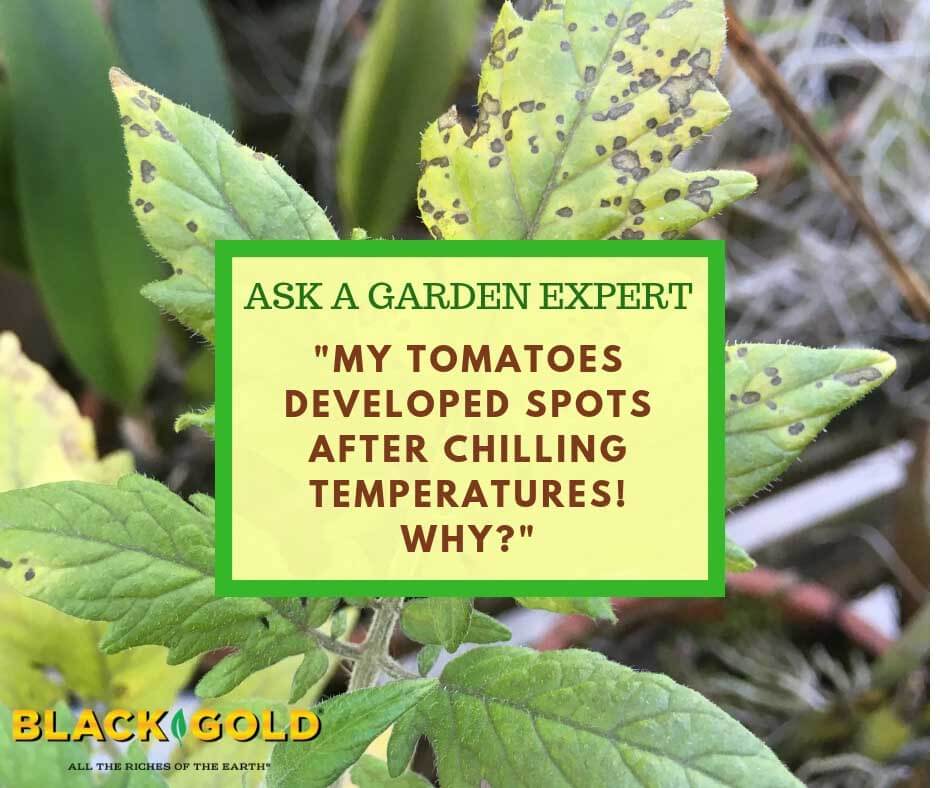
I have tomato seedlings that have tiny dark spots on the top of the leaves after it got down to 40 degrees the other night. I live in South Florida. Could this be cold damage? Question from Susan of Pembroke Pines, Florida.
Answer: The most common physical tomato leaf response to chilling is physiological leaf roll, which your tomatoes don’t seem to have. Unfortunately, cold stress, among other environmental stresses, can invite diseases to rear their ugly heads more quickly. It looks very much like your tomato may have Septoria leaf spot, a fungal leaf spot disease that starts on older leaves and spreads. Another possibility is bacterial spot. The way that you can tell the difference between the two is by looking at the center of the spots. Septoria blight will have tiny black specks in the middle of the spots, while bacterial leaf spot will not.
High humidity and rain will encourage the growth and spread of both diseases. Here is more about each.
Septoria Leaf Spot
The spots of this disease are generally circular and about 1/16 to 1/4 inches across. They have dark brown edges and grayish tan middles with tiny black spots in the center. An infected leaf will have many spots, which appear on the lower leaves first and move up to the younger leaves. Badly infected leaves eventually turn from yellow to brown. This disease rarely impacts fruit.
The first management step is to remove diseased leaves and dispose of them far from the garden. Then use clean shears to remove the most infected branches to increase air flow, which will discourage further fungal disease spread. Next, mulch the plants with straw or Black Gold Garden Compost Blend and bottom water to keep the disease from spreading. Refrain from overwatering! Then apply a copper-based fungicide every 7 to 10 days all season long.
Finally, really clean your garden at the end of the season, and rotate your tomatoes. This disease overwinters on infected tomato refuse or nearby weeds.
Bacterial Spot
This disease is a little worse because it can damage fruit as well as foliage. The spots on infected leaves are dark, small, irregular and eventually join together, causing overall leaf yellowing and decline. No little black spots will be visible in the center of the spots.
Care for your plants as you would for those with Septoria leaf spot. Another recommendation is to spray plants with a preemptive streptomycin antibiotic before transplanting. During periods of early flower and fruit set, you should also spray with a pesticide that contains mancozeb plus copper. This spray is not approved for organic gardening, so if you garden organically, another option is to replant your tomatoes for the season, while you can.
Contaminated seed or plants can be a source of the disease, so be sure to purchase your tomatoes from reliable, disease-free sources. The disease will also remain in the soil and old plant debris for a year or more, so clean your garden well at the end of the season and rotate your crops.
I hope this helps!
Happy tomato growing,
Jessie Keith
Black Gold Horticulturist

